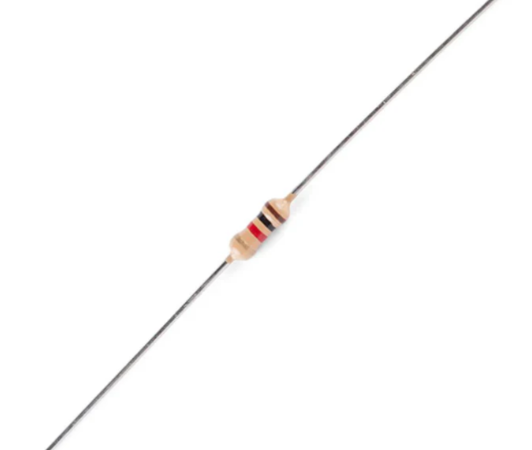There’s something poetic about motion — the way energy turns into movement, how invisible forces become something tangible. Whether it’s the hum of a ceiling fan on a hot afternoon or the steady rhythm of a bicycle on a quiet road, motors are at the heart of that motion. They’ve been with us for centuries, quietly evolving from clunky, noisy contraptions into sleek, efficient marvels of modern design.
But here’s the thing: we rarely notice them. We flip a switch, press a pedal, or turn a key — and the world moves. The technology behind that seamless motion is a story worth telling.
Pedaling Through Progress
Let’s start with something simple and nostalgic: the bicycle. There’s an elegance to it — a machine powered by nothing more than human energy, gears, and balance. But over time, we’ve added a little help. Electric bikes, or e-bikes, have become the face of personal mobility in crowded cities and lazy Sunday rides alike.
The secret behind their effortless glide lies in the cycle motor, a compact piece of engineering genius that converts electrical energy into mechanical force. These motors assist riders when climbing steep roads, maintaining speed, or simply cruising without breaking a sweat.
What makes cycle motors fascinating is their versatility. You’ll find them in foldable commuter bikes, heavy-duty cargo cycles, and even in DIY conversions where traditional bicycles are reborn with a spark of electricity. The motor responds to your pedaling — subtle, smart, and intuitive. It’s like having a gentle tailwind wherever you go.
And while purists might argue that e-bikes remove the soul of cycling, most riders would disagree. They don’t replace the ride — they enhance it. Suddenly, long distances feel manageable, steep hills less daunting, and cycling becomes accessible to everyone, regardless of age or fitness level. It’s not cheating; it’s evolution.
When Cooling Got Smarter
If cycling represents motion outdoors, cooling represents comfort indoors. And few things define summer in India like the low hum of a cooler pushing waves of cool air through a sun-drenched room. But those old, energy-hungry motors that powered them for decades? They’re being replaced by something far smarter — the bldc cooler motor.
BLDC stands for Brushless Direct Current, and the technology is reshaping how appliances consume power. Unlike traditional motors that rely on brushes (which cause friction and wear), brushless motors operate through electronic commutation — a fancy way of saying they spin using smart electronics instead of physical contact.
The result? Longer life, less noise, and up to 60% more energy efficiency. That means lower electricity bills, quieter operation, and a greener planet.
But what’s truly remarkable is how seamlessly this innovation fits into daily life. You don’t need to understand the circuitry or magnetic alignment to appreciate the difference. You just turn it on, feel the smooth airflow, and realize something’s changed — subtly, but meaningfully.
BLDC motors aren’t limited to coolers, of course. They’re everywhere now: in fans, washing machines, air conditioners, and electric vehicles. They’re the quiet revolution spinning beneath the surface of modern living, working silently to make our homes smarter, our energy use cleaner, and our devices more reliable.
The Bridge Between Human and Machine
There’s an unspoken connection between humans and the machines we build. Motors — in their essence — mimic our muscles. They take energy and turn it into motion, precision, and purpose. Whether it’s a bike wheel spinning, a fan blade cutting through air, or a robotic arm assembling microchips, motors form the heartbeat of every mechanical system.
But the shift toward smarter, more efficient motors marks something deeper than technological advancement. It’s a reflection of our changing relationship with the planet. For years, the goal was power — to make things faster, stronger, more capable. Today, it’s balance. Sustainability has become the new innovation.
Cycle motors promote eco-friendly mobility, reducing carbon emissions and traffic congestion. BLDC motors cut power consumption and extend product life. Both represent a step toward harmony — machines that work not just for us, but with the world around us.
A World in Motion
The beauty of modern engineering lies in its invisibility. You don’t need to see the mechanism to feel its impact. Every time you step into an elevator, glide on an escalator, or hear your fridge hum to life, you’re surrounded by the quiet brilliance of electric motion.
In cities across the world, thousands of e-bikes now deliver food, transport commuters, and redefine urban travel. In homes, appliances powered by brushless motors hum along efficiently, barely sipping energy. It’s a tapestry of motion woven into the fabric of daily life — effortless, precise, and sustainable.
Sometimes, I think about how far we’ve come from the early days of steam engines and hand-cranked contraptions. What started as mechanical curiosity has turned into a symphony of synchronized energy — millions of motors spinning in harmony, keeping our world alive and moving.
The Human Touch Behind the Machines
Behind every technical leap, there’s a team of thinkers, tinkerers, and dreamers who push boundaries. The engineers designing compact motors for cycles or ultra-efficient ones for coolers aren’t just solving mechanical puzzles. They’re reimagining how energy moves through the world.
What’s even more inspiring is how accessible this technology has become. You can buy an affordable e-bike conversion kit online or find a BLDC-powered fan at any local store. These aren’t futuristic luxuries — they’re everyday tools, democratizing innovation for everyone.
It’s easy to forget that progress doesn’t always roar. Sometimes, it hums quietly in the background — like the sound of a well-tuned motor doing its job perfectly.
Looking Ahead: The Future Spins Quietly
As we move toward electric vehicles, smart homes, and AI-driven automation, motors will remain at the heart of it all. But they’ll be smaller, smarter, and more sustainable than ever. The same technology that drives a cycle motor today might power autonomous drones tomorrow. The same principles behind a BLDC cooler motor could soon run entire factories with minimal energy loss.
It’s strange — the more advanced motors become, the more they remind us of something beautifully simple: efficiency is elegance.
The world doesn’t need machines that just move; it needs machines that move well — with purpose, with care, and with respect for the energy they consume.
A Gentle Spin to End With
In a way, motors teach us a life lesson. Keep moving, but do it efficiently. Don’t waste energy chasing noise; find strength in quiet performance. Like a cyclist gliding effortlessly on an electric bike or a fan spinning silently in a summer breeze, progress doesn’t always have to shout. Sometimes, it just flows.
And maybe that’s what makes technology so fascinating — it’s not about the metal or magnets or electricity. It’s about the way it connects us to the world around us. The steady hum of a motor isn’t just the sound of power — it’s the pulse of modern life, steady and enduring.

